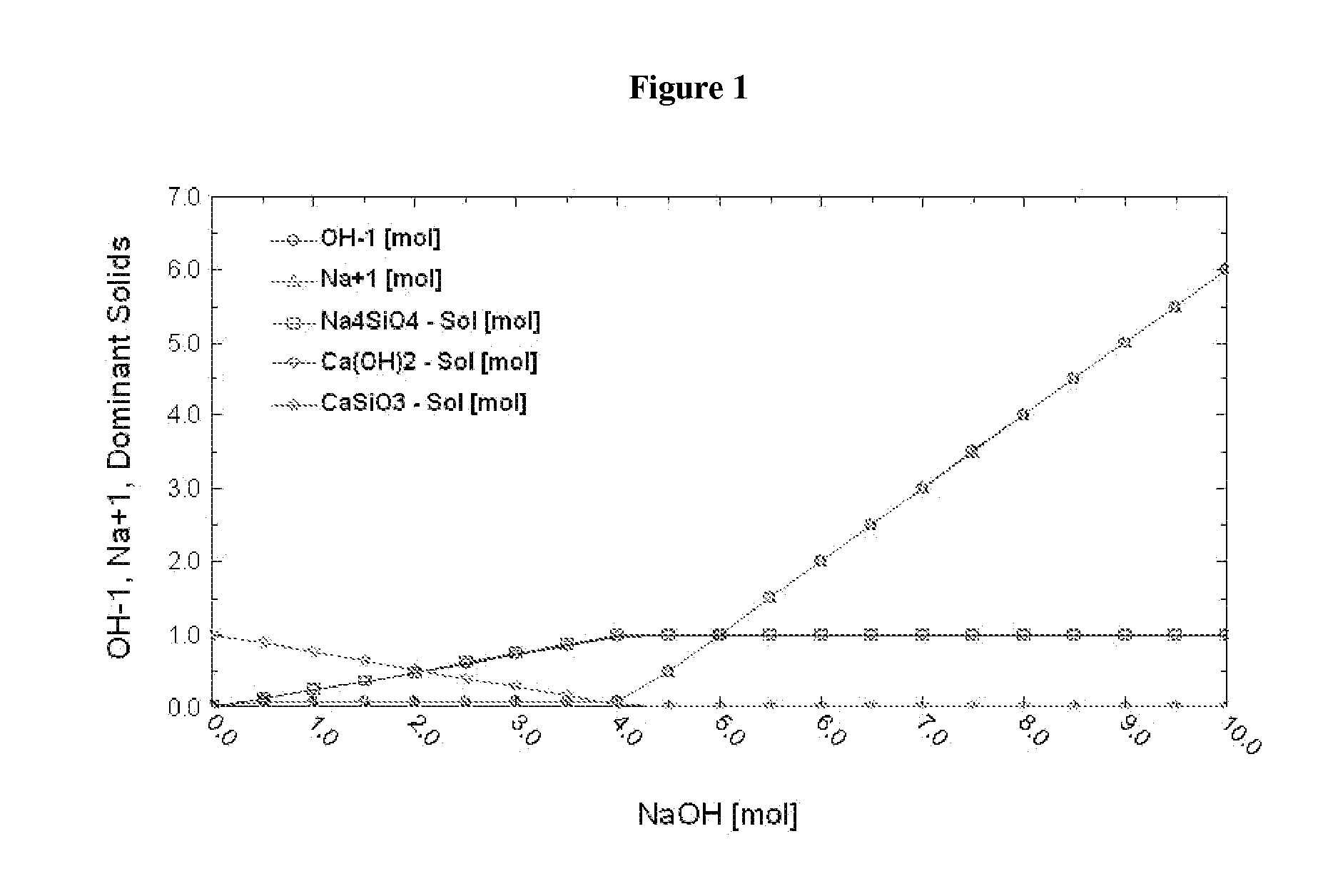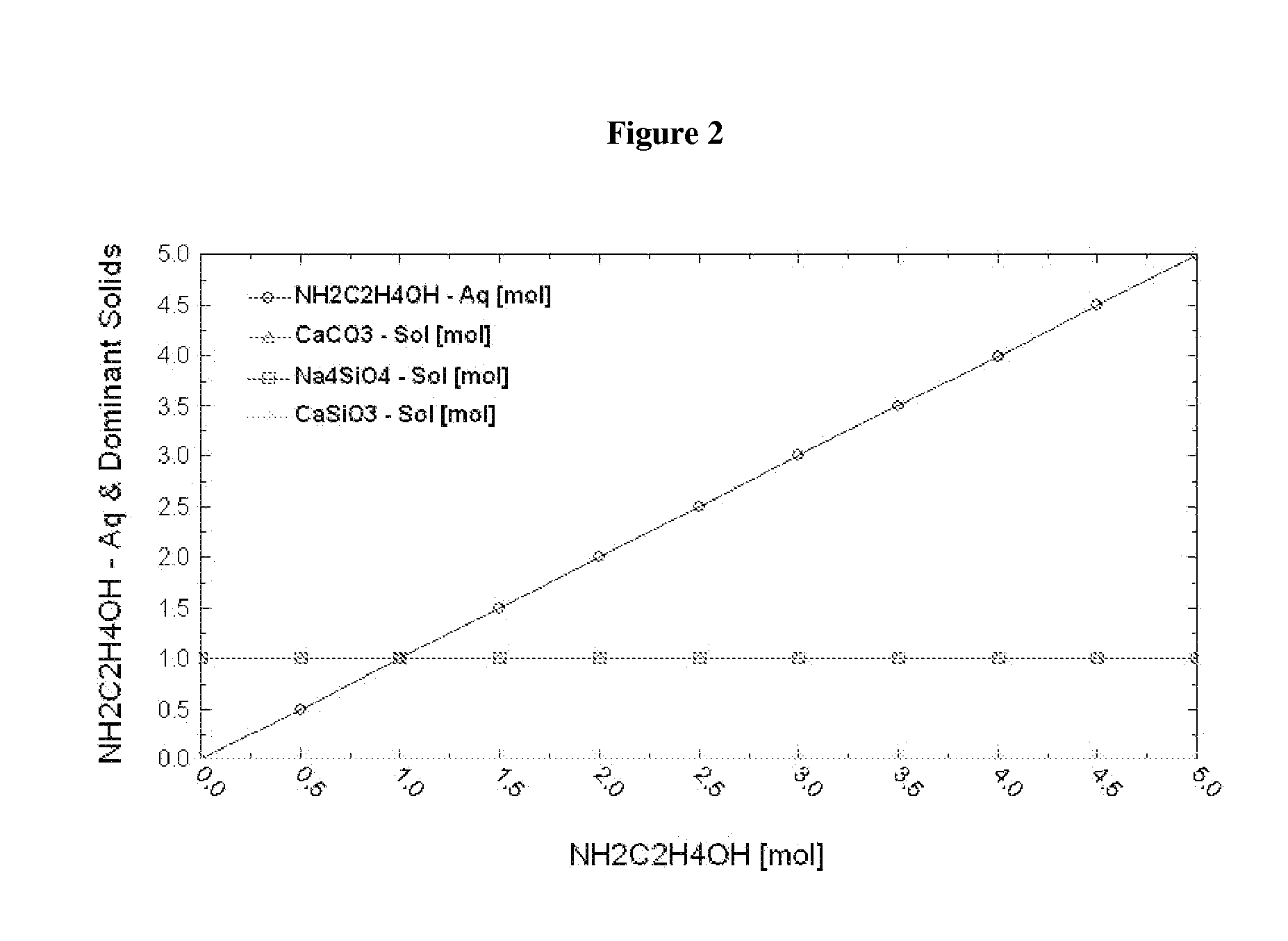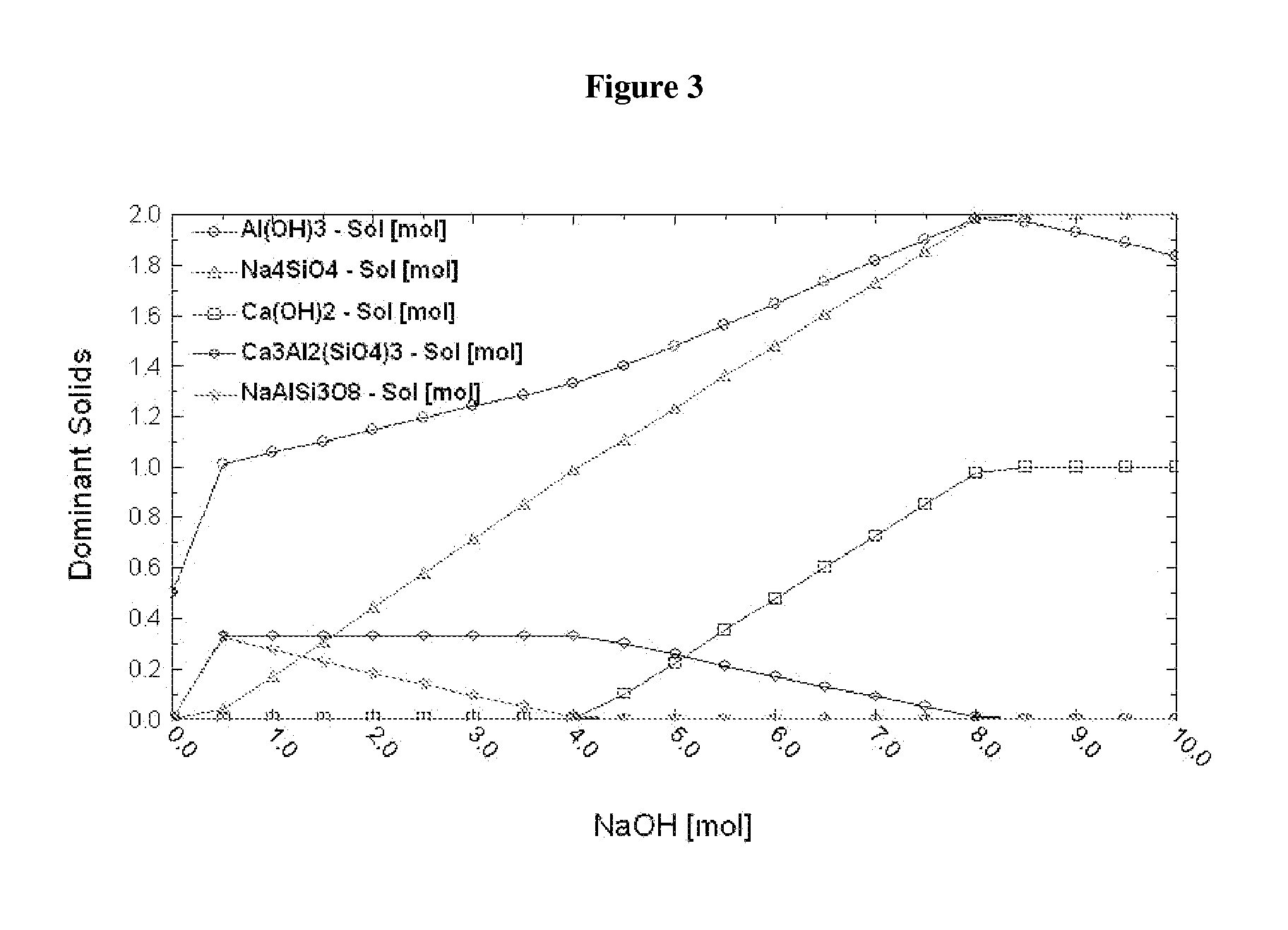Sequestration of a gas emitted by an industrial plant
a technology of industrial plants and gas sequestration, applied in the direction of separation processes, cell components, sulfur compounds, etc., can solve the problems of only effective mea methods, parasitic power losses, and capital intensive sequestration methods, and achieve the effect of reducing greenhouse and flue gas emissions
- Summary
- Abstract
- Description
- Claims
- Application Information
AI Technical Summary
Benefits of technology
Problems solved by technology
Method used
Image
Examples
working examples
NON-LIMITING WORKING EXAMPLES
Example A
CO2 Sequestration and MEA Regeneration from Mineral (Alumino)Silicates
example a1
Wollastonite (CaSiO3)
[0098]
2CaSiO3+4NaOH→Na4SiO4(s)+2Ca(OH)2 Reaction 1
MEA(aqueous solution)+CO2→MEA-CO2(l) Reaction 2
MEA-CO2(l)+Na4SiO4(s)+2Ca(OH)2→2CaCO3(s)+Na4SiO4(s)+MEA(l) Reaction 3
[0099]Thermodynamic simulation shows that when [NaOH] is about 4 M, 1 molal wollastonite is completely dissolved (as shown by x-intercept of the curve representing wollastonite in FIG. 1) to produce 1 mol Ca(OH)2 and 1 mol Na4SiO4 solid (see FIG. 1) and Na4SiO4 solid has no influence on the reaction of MEA-CO2 and Ca(OH)2 (see FIG. 2).
[0100]1) 2 g CaSiO3 was added into 100 ml 4M NaOH solution and heated for 6 hours under 500 rpm agitation at 90° C. 7 g Ca(OH)2 and 9 g Na4SiO4 were formed. CO2 saturated 30 wt % MEA solution was added into the solid formed as described above and the solution was stirred at 500 rpm for 10 minutes. XRD analysis of the final product suggests the presence of CaCO3.
example a2
Anorthite (CaAl2Si2O8)
[0101]
CaAl2Si2O8+8NaOH→2Na4SiO4(s)+Ca(OH)2+2Al(OH)3 Reaction 1
MEA(aqueous solution)+CO2→MEA-CO2(l) Reaction 2
MEA-CO2(l)+2Na4SiO4(s)+Ca(OH)2+2Al(OH)3→MEA(l)+CaCO3(s)+2Al(OH)3(s)+2Na4SiO4(s) Reaction 3
[0102]Thermodynamic simulation shows that when [NaOH] is about 8 M, 1 molal anorthite can be completely dissolved to produce 1 mol Ca(OH)2 and 2 mol Na4SiO4 solid and 2 mol Al(OH)3 (see FIG. 3). Al(OH)3 and Na4SiO4 solids have no influence on the reaction of MEA-CO2 and Ca(OH)2 (see FIG. 4).
[0103]28 g CaAl2Si2O8 was added into 100 ml 8 M NaOH solution. The solution was heated at 90° C. for 1 day under 500 rpm agitation. 7 g Ca(OH)2, 36 g Na4SiO4 and 15 g Al(OH)3 were produced. CO2-saturated 30 wt % MEA solution was added into the solid formed as described above and the solution was stirred at 500 rpm for 10 minutes. XRD analysis of the final product suggested the presence of CaCO3.
PUM
| Property | Measurement | Unit |
|---|---|---|
| porosity | aaaaa | aaaaa |
| porosity | aaaaa | aaaaa |
| temperature | aaaaa | aaaaa |
Abstract
Description
Claims
Application Information
 Login to View More
Login to View More - R&D
- Intellectual Property
- Life Sciences
- Materials
- Tech Scout
- Unparalleled Data Quality
- Higher Quality Content
- 60% Fewer Hallucinations
Browse by: Latest US Patents, China's latest patents, Technical Efficacy Thesaurus, Application Domain, Technology Topic, Popular Technical Reports.
© 2025 PatSnap. All rights reserved.Legal|Privacy policy|Modern Slavery Act Transparency Statement|Sitemap|About US| Contact US: help@patsnap.com



